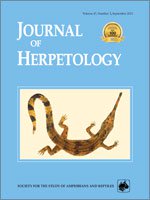Snakes within the genus Thamnophis (Gartersnakes and Ribbonsnakes) are often found in sympatry throughout their geographic distributions. Past work has indicated that some sympatric species within this genus may hybridize, but research of this nature is limited. We attempted to determine whether hybridization occurs between two Thamnophis species native to the upper midwestern United States: Common Gartersnake (Thamnophis sirtalis) and the Butler's Gartersnake (Thamnophis butleri). We sampled snakes (n = 411) across 26 locations in Wisconsin, including sites where both species coexist and sites where only Common Gartersnakes are found. We conducted genetic analyses on tissue collected from individuals field-identified as Common Gartersnakes or Butler's Gartersnakes. To verify the results of our field-collected data, we analyzed tissues from juvenile snakes (n = 4) suspected to be the offspring of a Common Gartersnake and a Butler's Gartersnake that were housed together in a captive situation. Of the field-collected snakes analyzed, eight snakes were consistent with expected Common × Butler's Gartersnake hybrids. All four of the captive offspring analyzed resolved as putative hybrids, corresponding with our field-collected samples. Butler's Gartersnake is a globally rare species, endemic only to the upper midwestern United States. Studies involving the potential for hybridization between common and uncommon species are useful from a conservation perspective. The low incidence of hybridization we observed would indicate that hybridization between these species is uncommon. Further research investigating rates of hybridization would help assess any potential threat posed by outbreeding between common and rare gartersnakes in this region of the United States.
BioOne.org will be down briefly for maintenance on 17 December 2024 between 18:00-22:00 Pacific Time US. We apologize for any inconvenience.
How to translate text using browser tools
1 September 2013
Evidence of Hybridization between Common Gartersnakes ( Thamnophis sirtalis) and Butler's Gartersnakes (Thamnophis butleri) in Wisconsin, USA
Joshua M. Kapfer,
Brian L. Sloss,
Gregor W. Schuurman,
Rori A. Paloski,
Jeffrey M. Lorch
ACCESS THE FULL ARTICLE

Journal of Herpetology
Vol. 47 • No. 3
September 2013
Vol. 47 • No. 3
September 2013




